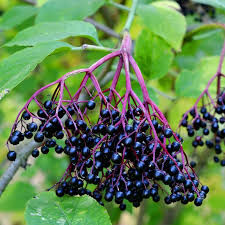6 Medicinal Plants In Your Backyard
Published 7:00 am Thursday, April 11, 2019

- elderberry
You see them in pastures and ditches, attaching themselves to fence posts, nestled against office buildings in the city and, these days, intruding in your yard. They are the weeds that you have probably weed wacked that heal wounds, treat colds, inflammation, respiratory problems, and much, much more.
For more than 250 years Cajuns, Creole and African-Americans have benefitted from the medicinal properties of plants, learned from Native Americans who first settled here.
Most of the plants talked about here can be found in the Healer’s Garden at Vermilionville where Mary Perrin, master gardener and traiteuse, and MaryAnn Armbruster, clinical chemist, are co-chairs of the garden. Perrin shares some of what they teach at the garden.
As you’ll see, preparing, teas, washes or poultices requires very few tools: your hands, a pot of boiling water and mortar and pestle. Note that in using any plants for medicinal purposes, they should be rinsed first. Armbruster cautions that scouting out these plants can be tricky if you are not familiar with those indigenous to this area. Some plants have lookalikes, so you should get the help of an herbalist or someone experienced in the field to identify them. And, while all the vegetation is consumable, you should let your doctor know of any you will be ingesting, so that it is a part of your medical file.
Plantain (not the banana plant) has been called nature’s band-aid, because it has been shown to heal burns, stings, cuts, eczema and mosquito bites. If you are bitten and start to whelp, a quick fix is to rub the leaves between your hands and apply it to the irritated area. It has been known to stop itching immediately. You can also chew it for a short while and spit it in your hand before applying it. It is edible.
Elderberry can be found all over Acadiana in unattended pastures and lots. This bush or short tree produces clusters of tiny cream-colored flowers that turn into smooth black berries. It subsides a cough, soothes the throat and treats respiratory ailments. Just boil the berries in water until they make a syrup, then strain and use like a cough syrup. Also, vigorously rub the leaves between your hands and put them on an achy joint wrapped with a gauze. A not-so-medicinal note: Meghan Markle’s wedding cake was drizzled with an elderflower syrup.
Honeysuckle is said to be a powerhouse in fighting many ailments and illnesses. Use the whole plant to boost the immune system, treat inflammation, nausea, fever, migraines sores or even a scrapped knee. Bring 4 cups of water barely to a boil. Once the water starts to ripple, turn the stove to low, put in the plant parts and let it steep for the desired strength of tea. You can sweeten with honey. To use as a wash externally on sores or scrapes, steep the brew 1-4 hours or longer.
Yarrow is known by herbalists as the battle field plant, because it was used extensively during the Civil War to aid wounded soldiers because of its antibiotic, anti-inflammatory properties and its anti-coagulant ingredients. The easiest use is to rub the white flowers vigorously between your hands and put it directly onto a wound and wrap with gauze.
Dewberries look just like blackberries, except their bushes trail and are not as tall. Oddly enough, it’s not the berries that are useful, but the stems and leaves that are healing for bladder infections and swelling. For a bladder infection, a tea is made by boiling the greenery and then straining them; drink a cupful twice a day until symptoms ease. To reduce swelling, mash the leaves, as with a mortar and pestle, and put the mash directly onto the swollen area, keeping it in place with gauze.
Crossvine (not to be confused with the trumpet creeper) grows on fences and telephone poles all summer long. Coushatta Indians used the leaves for rheumatism and the vine for headaches. Three leaves steeped per cup of tea is also said to be nature’s miracle anti-stress and fatigue fighter. Wild plant enthusiasts claim that early settlers gave a cross vine brew to their tired horses and mules to get them back on their feet.
Other Uses For Local Flora And Fauna
Elderberry- Try making a dye for Easter eggs.
Blue Mistflower (or Wild Ageratum) – A great pollinator for bees
Mamou Bean (or Coral Bean)- Excellent for hummingbirds
Swamp Mallow- A butterfly larval host
May Pop Passionflower- Songbirds love the fruit.
Rue- Plant in your gardens. Dogs and cats hate the smell.
Deep South Magnolia grandiflora leaf- Can be used in cooking, in place of a bay leaf





